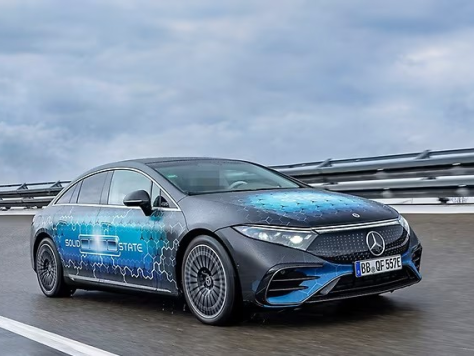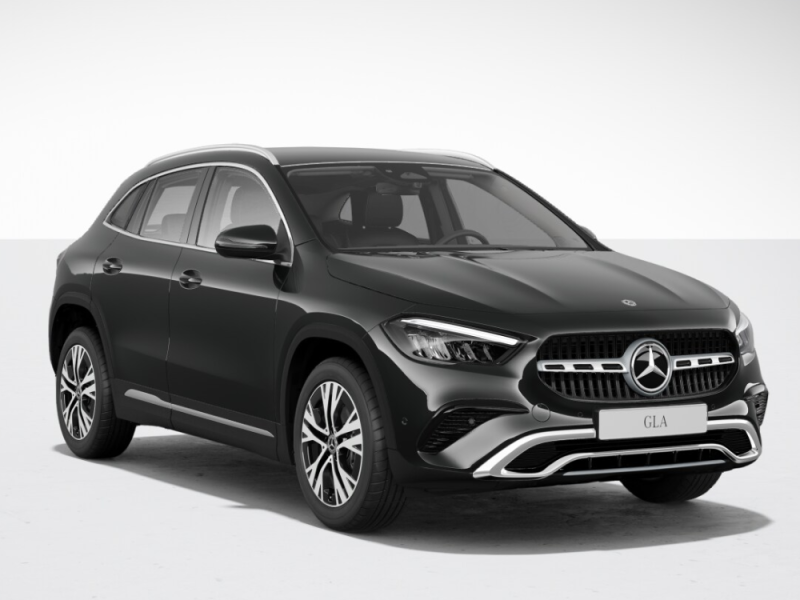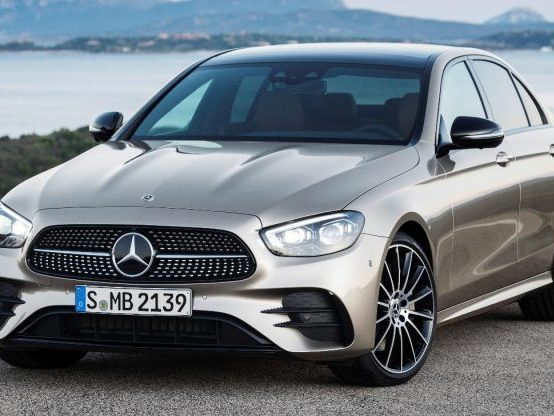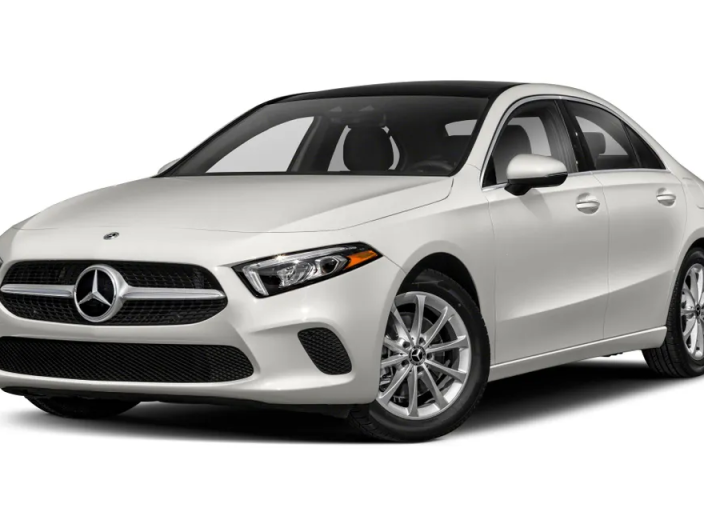Q
Which is the top model of Mercedes GLC?
The Mercedes GLC lineup features several models, making it difficult to define a single top variant, as this largely depends on individual criteria for what "top-tier" means—whether one is considering performance, features, price, or other dimensions. Based on the available information, the Mercedes-Benz GLC 350e 4MATIC, priced at RM 425,888, is among the more expensive options. It is equipped with a Petrol Plug-in Hybrid (PHEV) powertrain, delivering a combined output of 313 PS (230 kW) and an official all-electric range of 131 km. The model includes numerous high-end features, such as an 11.9-inch vertical infotainment touchscreen, a Burmester 3D sound system with 15 speakers, and air suspension.
Of course, if one considers coupe models, the upcoming 2025 Mercedes GLC Coupe offers options like the GLC 300 4MATIC Coupe, which, excluding road tax, is also positioned at a higher price point. It boasts a maximum power of 190 kW (258 horsepower) and can accelerate from 0 to 100 km/h in just 6.4 seconds. This model combines a stylish, sporty appearance with the practicality of an SUV and the sleek design of a coupe.
In summary, the choice of a top-tier model depends on whether an individual prioritizes performance, luxury features, aesthetic appeal, or other specific needs.
Special Disclaimer: This content is published by users and does not represent the views or position of PCauto.
Related Q&A
Q
Does GLC feature 4WD or AWD?
The Mercedes-Benz GLC is available in both rear-wheel drive (RWD) and all-wheel drive (AWD) configurations. The GLC 200 models from 2018 to 2020 feature rear-wheel drive, while the 2023 Mercedes-Benz GLC 300 4MATIC (CKD) and Mercedes-Benz GLC 350e 4MATIC come equipped with the AWD system labeled "4MATIC."
The 4MATIC all-wheel drive system offers several advantages. It automatically adjusts the torque distribution between the front and rear axles based on road conditions. For instance, on wet or slippery surfaces, more power can be delivered to the wheels with better traction, ensuring stability and safety. During regular driving conditions, it provides a smooth and stable ride. Moreover, when faced with off-road or challenging terrains, the 4MATIC system helps the vehicle maintain excellent navigation.
Q
What is the difference between Mercedes GLC and GLC 4MATIC?
The Mercedes GLC is a lineup of vehicles, whereas the GLC 4MATIC specifically refers to the models equipped with an all-wheel drive system, highlighting a key distinction between the two. In terms of drivetrains, the GLC may come in various configurations, including rear-wheel drive, while the GLC 4MATIC features an all-wheel drive system that distributes power to all four wheels. This system provides better traction, stability, and capability on slippery, muddy, or snow-covered surfaces, enhancing safety and control during driving.
Performance-wise, due to the differences in drivetrain, the GLC 4MATIC offers smoother and quicker acceleration from a standstill, with more effective power transfer in challenging conditions. Compared to some rear-wheel drive GLC models, the power delivery is also more stable. Of course, variations in engine specifications and other configurations among different models will also affect overall performance.
Additionally, the pricing of the GLC 4MATIC is generally higher than that of equivalent non-4MATIC models, as the all-wheel drive system adds to the cost. Consumers can choose based on their needs: those frequently facing harsh driving conditions or seeking better handling and stability will find the GLC 4MATIC more suitable, while those mainly driving in urban environments with good road conditions may find the standard GLC configurations more than adequate.
Q
Is the GLC a good family car?
The GLC makes an excellent family vehicle. It offers a spacious interior that comfortably seats five passengers, while the 40:20:40 split-folding rear seats provide flexibility for accommodating both passengers and cargo. The generous trunk space easily accommodates strollers, groceries, or luggage for family trips.
In terms of safety, the GLC is equipped with a comprehensive array of standard safety features, including multiple airbags, an anti-lock braking system (ABS), and stability control. Advanced driver assistance systems such as lane departure warning, active braking, and blind-spot monitoring add an extra layer of safety.
Performance-wise, its engine offers ample power for everyday driving and highway merging. The ride quality is comfortable, with a smooth suspension system that adeptly handles bumps and uneven surfaces. The interior is finely crafted, featuring high-quality materials and modern technology. The infotainment system is user-friendly, making it easy to connect devices for entertainment.
However, it's worth noting that, compared to some hybrid or electric vehicles, the GLC may have relatively higher fuel consumption. Additionally, its luxury positioning may result in higher maintenance and insurance costs. Overall, weighing its pros and cons, the GLC is a strong choice for families seeking a comfortable, safe, and stylish vehicle.
Q
What is the highest price of Mercedes GLC?
Among the Mercedes GLC lineup, the highest-priced model is the Mercedes-Benz GLC 350e 4MATIC, with a price tag of RM 425,888. This vehicle belongs to the D-segment and features a Petrol Plug-in Hybrid (PHEV) powertrain, combining the strengths of a gasoline engine with electric drive to deliver robust performance while maintaining fuel efficiency and environmental friendliness.
With a top speed of 220 km/h and an official 0-100 km/h acceleration time of 6.7 seconds, the GLC 350e offers a comprehensive fuel consumption of 7.7 L/100 km and an all-electric range of 131 km, catering to a variety of travel needs. Inside, the vehicle is richly equipped and boasts 15 Burmester 3D speakers and an 11.9-inch vertical infotainment touchscreen, providing a comfortable and luxurious driving experience. The overall warranty for the vehicle is four years with no mileage limit.
Q
Is a Mercedes GLC expensive to maintain?
The maintenance costs for the Mercedes-Benz GLC can vary due to a number of factors, but generally speaking, they are considered to be in the moderate to high range. The GLC typically requires servicing every 10,000 kilometers or every six months. A basic service may include oil and oil filter changes, along with basic checks, costing around RM 1,500 to RM 2,000.
Major service intervals are longer or based on higher mileage and involve more components, such as replacing the air filter, fuel filter, and spark plugs, as well as inspecting or changing the transmission fluid. These services can range from RM 3,000 to RM 5,000. Based on an average annual driving distance, the total maintenance costs in a year can accumulate to several thousand ringgit.
Moreover, from a long-term perspective, as the vehicle ages, the likelihood of needing more expensive repairs, such as suspension, electrical systems, or engine components, increases, which can drive up overall maintenance costs. Given the higher value of the GLC, insurance premiums are often also higher compared to some non-luxury models. Additionally, luxury car parts, like those for the GLC, typically come at a premium, meaning repair costs can be higher if needed.
Q
Which is more expensive, GLC or GLA?
Typically, the GLC is priced higher than the GLA. The GLA is categorized as a compact SUV, while the GLC falls into the mid-size SUV segment, which generally commands a higher price point. From a positioning perspective, the GLC is usually equipped with more advanced features, offers larger dimensions, and provides more interior space, resulting in a more comfortable driving experience, all of which contribute to its higher price.
For instance, in the local market, the starting price for the GLC entry-level model is RM 281,594, whereas the official starting price for the GLA is around RM 264,800. Overall, the price range for the GLC is higher. Of course, the actual purchase price may vary based on factors such as model specifications, regional differences, and market promotions.
Q
Is GLC a small SUV?
No, the GLC is not classified as a compact SUV. It falls under the D-segment and is categorized as a mid-size SUV in the automotive industry. Its length is approximately 4,700 millimeters (depending on the model), providing spacious interiors that offer ample room for passengers and luggage.
For example, many GLC models feature a five-seat configuration, with a reasonably sized trunk that meets everyday needs and can accommodate luggage for travel. Mid-size SUVs like the GLC are designed to balance maneuverability with interior space. They are larger than compact SUVs, offering a more comfortable driving experience, particularly during long-distance journeys, and typically come equipped with a wider array of features and stronger performance.
This makes the GLC suitable for various uses, from daily family commuting to weekend getaways.
Q
Can the Mercedes GLC run on regular gasoline?
The Mercedes GLC cannot run on regular gasoline; it requires at least 95 octane fuel, and 98 octane is also acceptable. Different compression ratios in engines necessitate the use of different fuel grades. Generally, vehicles with a compression ratio between 10.0 and 11.5 should use 95 octane petrol. The compression ratio of the engine equipped in the Mercedes GLC determines the need for higher octane fuel to ensure proper operation.
Using fuel with an octane rating lower than recommended, such as using 92 octane instead of 95, can lead to ignition delay, reducing the engine's power output and thermal efficiency, ultimately diminishing the vehicle's performance. Conversely, using fuel with a higher octane rating than recommended, like substituting 98 octane for 95, may lead to engine knocking. Engine knocking can impact operational stability and, in severe cases, cause abnormal wear on pistons and cylinders, potentially leading to major damage.
To ensure optimal vehicle performance, it is advisable to follow the recommended fuel grade specified in the owner's manual or on the fuel filler cap.
Q
Is the Mercedes GLC a hybrid vehicle?
Some variants of the Mercedes GLC are hybrid vehicles. For instance, the Mercedes-Benz GLC 350e 4MATIC is a Petrol Plug-in Hybrid (PHEV) with a combined system output of 313 PS and an official all-electric range of 131 km, powered by a 31.2 kWh battery. Meanwhile, the 2023 Mercedes-Benz GLC 300 4MATIC (CKD) features a Petrol Hybrid (HEV, MHEV) powertrain.
However, not all GLC models are hybrids. For example, the 2020 Mercedes-Benz GLC 200 and the 2018 Mercedes-Benz GLC 200 are traditional petrol vehicles with a fuel type of Petrol. Hybrid models combine the advantages of internal combustion engines and electric motors, providing power while enhancing fuel efficiency and reducing emissions, catering to a diverse range of consumer demands for both environmental responsibility and performance.
Q
How is the fuel efficiency of Mercedes GLC ?
The fuel efficiency of the Mercedes GLC varies depending on the model and its fuel type. For example, the Mercedes-Benz GLC 350e 4MATIC is a Petrol Plug-in Hybrid (PHEV) with an official all-electric range of 131 kilometers. When operating in a mode that combines petrol and electric power, its official combined fuel consumption stands at 7.7 liters per 100 kilometers. This makes it an excellent choice for users whose daily commutes fall within the electric range and who can charge regularly, significantly reducing petrol consumption.
On the other hand, models like the 2023 Mercedes-Benz GLC 300 4MATIC (CKD) and the 2020 Mercedes-Benz GLC 300 4MATIC, which are Petrol Hybrids (HEV, MHEV) and traditional petrol vehicles respectively, have an official combined fuel consumption of 7.1 liters per 100 kilometers. These figures are in line with the expected performance for mid-size luxury SUVs in this segment.
However, actual fuel consumption may vary based on driving habits, road conditions, and vehicle load. Aggressive driving, frequent idling, and mountainous terrain can all contribute to increased fuel consumption. Overall, the GLC offers competitive fuel efficiency within its class, particularly the hybrid models, which help save fuel in certain driving scenarios.
Latest Q&A
Q
Need a Loan for BYD Sealion? Here's How to Calculate It!
To calculate the loan for the BYD Sealion, you can start from the following aspects. First, you need to clarify that the formula for calculating loan interest is Loan Interest = Borrowed Amount × Loan Term × Interest Rate. However, in reality, it will be more complicated due to compound interest and other fees.
Regarding loan plans, there are different down - payment ratios. Commonly, there are 20%, 30%, 40%, 50%, 60%, etc. The higher the down - payment ratio, the less the loan amount will be, and the monthly payment and total interest will also change accordingly. The repayment terms usually include options such as 12 months, 18 months, 24 months, and 36 months. With a short - term repayment term, the monthly repayment amount is high, but the total interest is low. The situation is the opposite for a long - term repayment term.
There are two repayment methods: equal - principal - plus - interest and equal - principal. For equal - principal - plus - interest, the monthly repayment amount is fixed, and the proportion of interest in the early stage is large. For equal-principal, the monthly repayment amount decreases, and the interest also decreases accordingly.
In addition, the interest rates of different banks and financial institutions vary. You should compare and choose the institution with a lower interest rate. At the same time, pay attention to whether there are additional fees such as handling fees and insurance premiums. By considering all these factors comprehensively, you can calculate a loan plan that suits your financial situation.
Q
What is BYD Sealion? Here's the Full Introduction for You!
The BYD Sealion is a pure-electric mid-to-large-sized sedan that emphasizes a sporty and youthful appeal. It features an eye-catching exterior design, including sharp LED headlight clusters, water ripple daytime running lights, an elegant Coupe-style sloping roof, 19-inch sporty alloy wheels, and droplet-shaped LED taillight clusters. The interior follows the "Ocean Aesthetics" design concept and is equipped with a 10.25-inch full LCD instrument panel, a leather multi-functional steering wheel, a 15.6-inch rotatable LCD entertainment system, ambient lighting, and an electronic gear lever, exuding a high-class and tech-savvy vibe.
In Malaysia, there are three trim levels available: Dynamic, Premium, and Performance. The entry-level Dynamic trim is powered by a rear-mounted electric motor with 204 horsepower. It can accelerate from 0 to 100 km/h in 7.5 seconds. The battery has a capacity of 61.4 kWh, offering a range of up to 460 km under the WLTP test standard or 510 km under the NEDC standard. The Premium trim also has a rear-mounted single motor, but with 313 horsepower. It can achieve 0-100 km/h acceleration in 5.9 seconds. The battery capacity is 82.5 kWh, providing a range of 570 km (WLTP) or 650 km (NEDC). The Performance trim comes with a dual-motor all-wheel-drive system, delivering even more powerful performance. Additionally, the Sealion supports a maximum DC fast-charging technology of 150 kW and is paired with the "Blade Battery", ensuring high safety standards.
Q
What is the Size of the BYD Sealion Tyre? Check Standard Here!
The BYD Sealion is equipped with 18-inch rims, and its tire specification is 225/50 R18, with the same tire specifications for both the front and rear. This tire specification is carefully designed. The "225" indicates that the tire width is 225 millimeters. A wider tire can provide a larger contact area with the ground, thereby enhancing the vehicle's grip during driving, especially during acceleration, braking, and high-speed driving, making the vehicle's handling more stable and safe. The "50" represents the aspect ratio, which means the tire thickness is 50% of the width. A moderate aspect ratio balances comfort and handling, effectively filtering road bumps and bringing a comfortable driving and riding experience for the passengers inside the vehicle. The "R" stands for the radial tire structure. Tires with this structure have good heat dissipation and low rolling resistance, which can improve fuel economy or extend the driving range. The "18" refers to the rim diameter of 18 inches, which complements the overall body design and shows a dynamic style.
Q
What Are the Common Issues with the BYD Sealion? Learn Before You Buy!
Before buying the BYD Sealion, it’s worth looking into some potential issues reported by early owners.
Some users have mentioned battery system glitches and occasional powertrain faults. In a few cases, the vehicle pulled to one side even after a four-wheel alignment. There were also reports of abnormal noises from the front suspension, which, although resolved after multiple repairs, appeared fairly frequently.
Other concerns included intermittent charging problems at the slow-charging port, which service centers struggled to diagnose. One owner noted that the power tailgate once failed to close properly.
Interior complaints included seat sagging, rust on metal components, and malfunctioning memory seat functions that failed to recall saved positions. There were also isolated issues like mirror vibration noise, dashboard warning messages, driver monitoring failures, inconsistent behavior in the ADAS system, problems with the wireless phone charger, and unusual streak marks on the front bumper in rainy conditions.
That said, it's not unusual for new vehicles to have some teething problems. BYD is actively working to improve product quality and after-sales support. We recommend checking real-world user reviews and long-term ownership reports to make an informed decision based on your needs and expectations.
Q
What's the Boot Capacity of the BYD Sealion? Find Out Here!
The trunk volume of the BYD Sealion in normal state is 400L, which can meet the need of placing several suitcases for daily trips and short-distance self-driving tours. If you need to load large items, the rear seats can be folded down in proportion to further expand the trunk's loading capacity. However, compared with some models, the Sealion shows a bit less flexibility when loading large items.
In addition, there is also a BYD Sealion 06 DM-i station wagon version. Its standard trunk volume reaches 670 liters. The official says it can easily accommodate six 20-inch suitcases. After the rear seats are fully folded down, the volume can be expanded to 1535 liters. Moreover, the trunk has some thoughtful detailed designs, such as nine hooks are provided and the cover plate supports two-level up-and-down adjustment.
View MoreRelated News

Benz to Bring Solid-State Battery EVs by 2030
WilliamJul 25, 2025

Mercedes-Benz GLA: Exquisite Interior Design for a Premium Driving Experience
Kevin WongMay 14, 2025

Mercedes-Benz E-Class: Timeless Exterior That Radiates Elegance
Kevin WongMay 12, 2025

Mercedes-Benz A-Class: Stylish Design That Redefines Luxury
JamesMay 6, 2025

Mercedes-Benz C-Class: Stylish and Sophisticated Design that Exudes Elegance
RobertMay 5, 2025
View More

















Pros
Cons